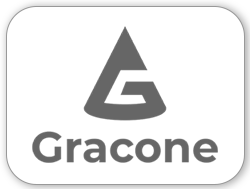
Industrial manufacturers have been holding on-site lunch & learn presentations at clients’ offices for decades. Iowa became the first state in the country to adopt mandatory continuing education for professional engineers in 1979. Other states soon followed Iowa’s lead and the appeal of lunch & learns quickly grew with engineers’ need to earn PDH credits.
How it Works
If you are not familiar with the concept, here’s how a lunch & learn works.
Let’s say Superior Pumps manufactures centrifugal pumps. Rachel, a mechanical engineer, is a customer who works for ABC Engineering. Roger, a salesperson for Superior, has worked on several projects with Rachel and calls on her frequently.
Roger asks Rachel if she would be willing to schedule a lunch & learn presentation at ABC Engineering’s office, which will cover the topic “Selecting the Right Mechanical Seal for Your Pump Application.” Rachel agrees and works with ABC’s administrative staff to reserve a meeting room and invite other engineers at the firm to attend.
On the day of the event, Roger orders box lunches for all the attendees from a local sandwich shop and has them delivered to ABC’s office prior to the 11:30 a.m. start time for the lunch & learn. Roger gives the presentation with the help of a mechanical seal expert within his organization. The presentation runs for 60 minutes, including time at the end for a question and answer session.
Roger and the seal expert stick around for another 25 minutes after the presentation ends, answering questions and engaging in one-on-one discussions with some of the engineers about specific centrifugal pump applications on current projects. The next day, Roger’s secretary emails certificates of completion for 1 PDH to all 30 engineers who attended the lunch and learn presentation.
Win-Win Situation
Lunch and learns are a win-win for the industrial manufacturer and the engineers. For the nominal cost of a box lunch, the manufacturer gains access to a roomful of engineers—some of whom may influence the purchase of products that the manufacturer sells. The engineers get 1 hour of free PDH credit and a free lunch, while gaining valuable knowledge relevant to their professional practice.
Hosting Lunch & Learns – Best Practices
- Know the rules for awarding PDH credits The last thing you want to do is award certificates of completion to attendees and then have them rejected by a state licensing board. Keep in mind that some engineers in the room may hold licenses in multiple states. For more information on this subject, see how to award PDH credits.
- Picking a venue A lunch & learn is often held at the office of your client (or prospective client), although you can also host lunch & learns at your own facility. Your client’s office is obviously the more convenient location for the attendees. Tip: Visit the meeting room before the presentation or get your client contact to send pictures. When using the client’s office, it’s a good idea to see the meeting room before the day of the event so you can get the “lay of the land.” If that’s not feasible, then ask your client contact if he can take pictures of the room and send them to you. Find out if a podium and projector will be provided. Ask about the size of the projector screen. Ask that a speaker’s table be set up if you will bring extra materials with you, such as handouts, props, or equipment samples. Find out if an internet connection is available. Tip: If using embedded videos in your presentation, store them on your laptop’s hard drive instead of trying to pull them from the internet “on the fly.” A third option—not for the faint at heart—is to take your lunch & learns “on the road.” Gracone recently helped a Fortune 100 company develop content and obtain PDH certification to support an outreach road trip around the country. The campaign includes a 2 PDH classroom session, along with an 18-wheeler outfitted with working systems featuring the manufacturer’s products.
- Bring spare equipment I have traveled the country delivering PDH seminars to professional engineers in hotel ballrooms. I can tell you from experience: be prepared for all contingencies! I suggest bringing two laptops, each fully charged and pre-loaded with your presentation. If your client will be providing the projector, bring your own too. If you are supplying the projector, bring two of them. Tip: Bring your own projector, soundboard, speakers, and mics, even if your client is providing the A/V equipment. Make sure you know the number of attendees, the size of the meeting room, and whether you will need to be “mic’d up.” Audio, not video, causes the most headaches. Although it’s a big hassle, consider bringing your own soundboard, microphone(s), and loudspeakers if you need to amplify your voice for a presentation—even if your client has sound equipment. Make sure you bring all the cables that are needed to connect between audio components. If you don’t have experience using audio equipment, test the system first in your own office to make sure you know how everything works. Embedded video in your presentation can be challenging to deal with if it includes sound. Engineers in the back of the room won’t be able to hear audio coming out of your laptop speakers, even in a relatively small room that doesn’t require you to be mic’d up. Either leave out the sound or be prepared to bring audio equipment with you to the presentation.
- Arrive early Arrive at your client’s office at least 30 minutes before the presentation is scheduled to begin. Give yourself a full hour if you will be setting up audio equipment. This will give you time to set up your equipment, troubleshoot any problems, adjust the temperature/lighting in the room, place handouts on attendees’ tables, and connect to your client’s wi-fi (if needed). Confirm that lunch has been delivered as soon as you arrive. If it hasn’t, check on the delivery status with the restaurant. Your goal is to be finished with your setup by the time attendees begin arriving a few minutes prior to the scheduled start time of the presentation. You want to be available to personally introduce yourself and thank them for attending.
- Ordering lunch Place your lunch order at least a day before the presentation and schedule it to arrive at least 20 minutes before the presentation start time. Invite attendees to grab their lunch when they first arrive in the meeting room. You don’t want attendees standing in a lunch line while you are speaking. You also don’t want the distraction of a dozen cellophane wrappings rustling at the same time during your presentation. Tip: For large groups, serve boxed lunches instead of a buffet. You don’t need to serve filet mignon steaks, but don’t skimp on lunch either. You can splurge with a buffet-style lunch (e.g. beef and chicken fajitas) if you are presenting to a relatively small group. Otherwise, a boxed lunch containing a sandwich, chips, and a drink will suffice. Boxed lunches are great because an attendee can quickly grab a lunch box and proceed to her seat. Buffet lines tend to move much slower. One other thing, you do not want to run short of lunches at a lunch & learn. Order at least 10% extra if you are limiting attendance to engineers who pre-enrolled for the presentation. I discourage allowing walk-up enrollments, but if you want to try it, be prepared. You’ll need to order even more extra food and develop a process to ensure that walk-ups don’t get to the lunches before the attendees who pre-registered. And don’t forget to order a lunch for the client’s admin who helped coordinate the event! Tip: Rely on your client’s admin to recommend local sandwich shops that have a successful track record of on-time delivery for meetings and lunch & learns.
- The attendee list You have a decision to make. Should you place limits on the engineers that will be invited to your presentation? For example, you may want to invite only mechanical engineers or only engineers in the firm that work on municipal projects. Limiting the attendee list will save you a few bucks on lunches, but you also risk missing out on good prospects. See the section on Freeloaders in PDH Marketing Challenges for a detailed discussion of this topic. You might also need to limit enrollment due to space constraints of the meeting room. Once the criteria have been established for invitations, you need to determine the information you will collect on the sign-up sheet. More is obviously better for you. It allows you to focus future sales/marketing efforts on the best prospects, but there’s a practical limit to how much information you can collect at a lunch & learn because you don’t want a long check-in line. Plus, the client may view you as being intrusive if you ask for too much information. A happy medium for the sign-up sheet is:
- Name (printed)
- Engineering Discipline
- Job Title
- Email address
- Signature
I would recommend asking for all the information listed above, at a minimum. However, if you want a shorter sign-up form, you could omit “Engineering Discipline” because you can often draw conclusions about a prospect based on his job title. It’s important to get the attendee’s signature because it serves as proof of attendance in the event of an audit by a state engineering board.
Tip: Get attendees’ information before the presentation and use it to pre-populate the sign-up sheet.
A best practice is to get all the enrollees’ information ahead of the presentation, if possible, and use the information to pre-populate the sign-up sheet. When you circulate the sign-up sheet at the presentation, ask each attendee to check the information for accuracy, make any corrections, and sign next to his name.
There are several advantages to pre-populating the sign-up sheet. First, some engineers’ handwriting is illegible. You can’t use information that you can’t read. And it’s especially important that you get the engineer’s name correct since it needs to be shown correctly on his certificate of completion.
Secondly, it saves a bunch of time on the day of the presentation. The attendee only has to check his information for accuracy and sign his name, as opposed to completing several fields of information.
Lastly, there will invariably be no-shows for your presentation from time to time. With a pre-populated sign-up sheet, you still get their contact information. You can reach out and tell them that you’re sorry they missed the presentation. If your PDH marketing program has taken the extra step to offer online courses, you can invite them to view the presentation on your website and complete a quiz to earn PDH credit.
- Issuing certificates of completion See how to award PDH credits for details on certificate requirements. You can either issue certificates to attendees on the way out the door or send them later by email. From the engineer’s perspective, getting a certificate at the door is great. It provides closure. The engineer has the certificate in hand, so he doesn’t need to worry about it anymore. However, printing out certificates ahead of the presentation can complicate things for you. You won’t be able to accommodate walkup attendees unless you have a way to instantly print new certificates onsite. The same goes for name changes on the sign-up sheet. For example, let’s say the registration list that you receive prior to the presentation includes the name “Bill Smith,” so that’s the name you print on the certificate, but Bill marks up the sign-up sheet on the day of the presentation and changes the name to “William Smith, Jr.” You need to issue Bill a new certificate. Tip: Email a PDF copy of certificates to attendees, even if you give them a paper copy in person. Instead of issuing certificates on the spot, you may want to email them to attendees after the presentation—preferably as soon as the next business day. This is a better option for the engineers, even if they don’t realize it. In my experience (yes, I have to earn 15 PDH credits myself every year), paper certificates are more easily misplaced than electronic files. Also, if you email the certificates, it gives you another touch point to help the engineers remember you. I highly recommend sending an email to the attendees after the presentation, even if you hand them a certificate at the door. The email should thank the attendee for attending and let him know that you are available to help if he has any questions or problems that he’s dealing with. The biggest downside to issuing certificates after the presentation is that emails can bounce, especially those that have file attachments. Ask your client to “whitelist” your email domain.


